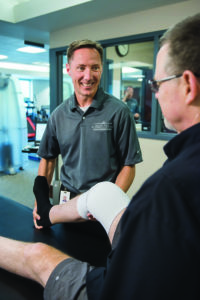 Anterior cruciate ligament (ACL) injuries are becoming more and more common in sports. There are numerous reasons why an ACL injury occurs and unfortunately, not all of these are very well understood. A recent study indicates that 3 out of every 4 ACL injuries are non-contact in nature. While this is true of both males and females, females are 2 to 8 times more likely to experience an ACL injury during sport.
Anterior cruciate ligament (ACL) injuries are becoming more and more common in sports. There are numerous reasons why an ACL injury occurs and unfortunately, not all of these are very well understood. A recent study indicates that 3 out of every 4 ACL injuries are non-contact in nature. While this is true of both males and females, females are 2 to 8 times more likely to experience an ACL injury during sport.







